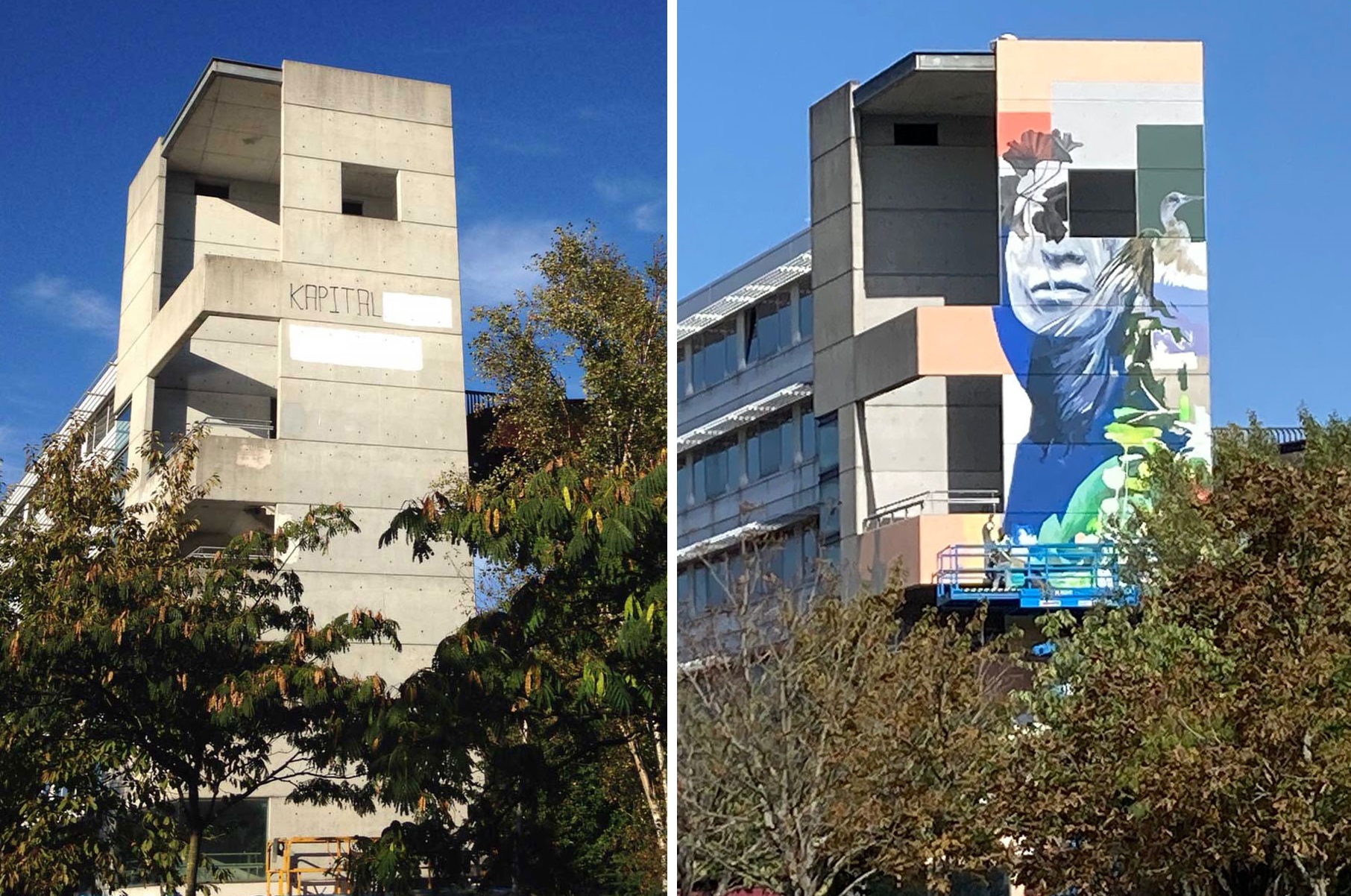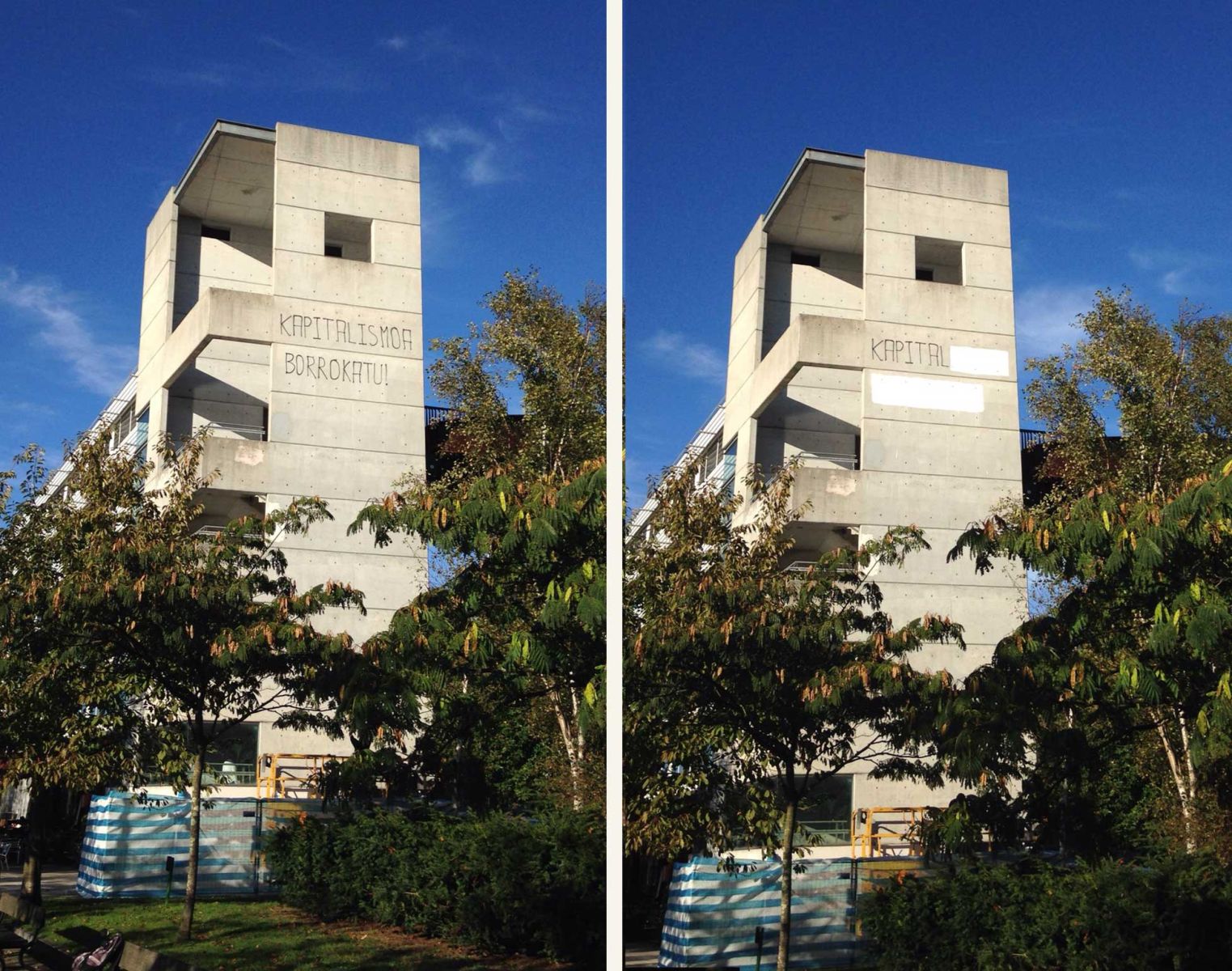
- The City Hall of San Sebastian has decided to abolish the work carried out by the graphic designer Igor Rezola Dizebi on behalf of the European Capitality of Culture San Sebastian 2016. Itsasondo's artist wrote "Fighting for capitalism," and then covered "fighting for ism," leaving on the wall the word "capital." After several years, Donostia Kultura has decided to end the uncomfortable message with another mural. To do so, they order Udane Juaristi Udatxo the new mural that has made a mural image called Gladys.

The City Hall of San Sebastian has just concealed a performative work by the marine artist Dizebi, who claimed street paintings and other “marginal” expressions. In addition, he performed his work for the program ‘Hormek esan dute’ of the European Capitality of Culture 2016, on the wall of the elevator next to the Urumea River. This article shows how Dizebi surprised the organizers of the Cultural Capitality with this work. The leaders of Donostia Kultura have had no problem in eliminating a work commissioned by the Cultural Capitality itself.
With a black spray, Dizebi, known for his beautiful murals, was in charge of painting this tower and he wrote the motto “Fighting for capitalism”. He then deleted the written phrase and only left the word “Capital” visible. The artist explained his intention in this video with the following words:
“There is a tendency to eliminate these types of political or social proposals, which are part of the street expression, so I wanted to rescue those expressions that are part of the street: painted and patches. I wanted to bring to the center those most marginal expressions and bring them up to the height of a mural of capitalism.”

Deleted at 6 years old
The City Hall has now taken the decision to remove this work from the graffiti artist with a giant and colorful mural made by the Azkoitia artist Udatxo through the Donostia Apain programme. In this report by Irutxuloko Hitza explains the work done by Udatxo.
When he presented the work of Cultural Capitality, Dizebi himself explained that he is also in favor of painting spectacular murals, but he determined that what he was looking for on that wall had another objective: “You can make elegant murals, great technique, etc., but I think there are other kinds of expressions around us in our daily lives, which may not perceive so much value, and which have their importance.”
Tendency to eliminate street expressions
According to the grafitero goierritarra, in capitals such as San Sebastian “the most common” is that graffiti and other graffiti are limited “to the periphery”, as he considers that there is a “tendency to eliminate street expressions” in the city centers. In this sense, as if he prophesied what was going to happen with his work, he denounced that many of the works of art carried out by public institutions and within the law “are used to remove from the streets that true graffiti or that type of true expressions”.